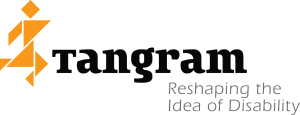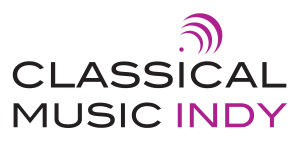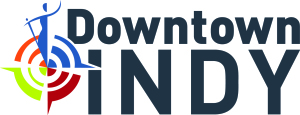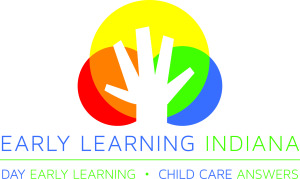By Lynn Sygiel, editor, Charitable Advisors
 The name was direct and to the point — Independent Residential Living of Central Indiana – and it served the Greenfield-based nonprofit agency well for over 20 years. The organization referred to itself as IRL.
The name was direct and to the point — Independent Residential Living of Central Indiana – and it served the Greenfield-based nonprofit agency well for over 20 years. The organization referred to itself as IRL.
When the agency moved to Indianapolis in the mid-2000s, Chief Executive Officer Connie Dillman was alerted to a potential problem. In Indianapolis, the auto racing capital of the world, IRL stands for the Indy Racing League and although there was no confusing the missions of the two organizations, name recognition was clearly one sided. In Indy, if you say IRL, you think of fast cars, Memorial Day weekend and the Indianapolis 500.
Dillman knew her nonprofit needed a name change, but she also knew it couldn’t happen overnight.
After nearly two years and thoughtful discussions with board members, clients, community donors and stakeholders, IRL made the switch to Tangram in 2008.
If the goal was to put distance from the racing series, Dillman certainly succeeded. But why Tangram?
“We just weren’t hitting on the right name,” said Dillman.
After starting the process informally, she was reminded of a national speaker whose words ultimately provided the tagline: reshaping the idea of a disability. For staff, the name had to convey the traits of people with disabilities – brave and strong. Paging through the dictionary one evening, something her grandfather had done, she came across tangram, a dissection puzzle that creates many shapes.
Dillman isn’t alone. She is among a growing number of nonprofit leaders reinventing their brands or at the very least, raising questions to determine if their names still reflect their missions and work.
 In the past several years, other area nonprofits faced similar situations:
In the past several years, other area nonprofits faced similar situations:
- Early Learning Indiana changed from Day Nursery in 2014
- Fort-Wayne based Headways Counseling changed from Family and Children’s Services in 2012.
- Classical Music Indy changed from Fine Arts Society in 2014
- Indiana Downtown, Inc. switched from Downtown Indy in 2014
 Each nonprofit approached the rebranding process a little differently.
Each nonprofit approached the rebranding process a little differently.
External help varied, but all hired consultants, several paid for with grant dollars. Some parsed out the project, hiring different consultants for specific tasks, and three hired consultants that shepherded the entire process. The costs for these rebranding efforts ranged from $20,000 to over $100,000.
 The shortest effort lasted six months, and the longest took two years. In general, all agreed that swift name changes are not recommended because the public needs time to digest the changes, especially with veteran nonprofits that have deep ties to the community.
The shortest effort lasted six months, and the longest took two years. In general, all agreed that swift name changes are not recommended because the public needs time to digest the changes, especially with veteran nonprofits that have deep ties to the community.
Three leaders — Early Learning Indiana’s CEO/President Ted Maple, Downtown Indy’s President Sherry Seiwert and Classical Music Indy’s CEO/President Charles Stanton – were new to their positions, and within the first year announced name changes.
 When Maple was hired in 2013, his board had just completed a three-year strategic plan with an emphasis on communication. Armed with a grant from Lilly Endowment, the 115-year-old nonprofit hired Well Done Marketing and embarked on a process that might or might not include a name change.
When Maple was hired in 2013, his board had just completed a three-year strategic plan with an emphasis on communication. Armed with a grant from Lilly Endowment, the 115-year-old nonprofit hired Well Done Marketing and embarked on a process that might or might not include a name change.
After two months of market research and interviews, what became clear was that families were looking for a solid educational experience. The name, over a century old, did not convey that, and sounded like a place to buy outdoor plants
The nonprofit’s statewide role had expanded, adding preschool advocacy and teacher training. It also provides resources to other child-care providers through its Child Care Answers program. The name Day Nursery was no longer sufficient to describe the daily work. The entire rebranding process took about 18 months, and included a new logo, website, signs for its centers and marketing dollars to share the change publicly.
A nonprofit’s moniker is more important than ever. With the rise of Facebook, Twitter, blogs and other online media, an organization’s name has constant public exposure. Large nonprofits have known this, but smaller ones are now not only aware but are spending time critically reviewing their brands.
When Stanton arrived, first as a consultant, the board and staff was aware that the 47-year-old organization’s name, Fine Arts Society, no longer fit. Started by Lilly employees, originally it put on events that integrated fine arts. Over time, its focus changed to just one fine art – classical music. Stanton believes that what an organization does should be evident in its name.
“Overwhelmingly, the feedback from the community members and people who listen was ‘I think classical music should be in the name,’” said Stanton.
“The fortunate part for me when I came into the organization, the board and staff had already decided that they needed a name that better reflected the work that they do. And that was really their only stipulation. It made it very easy because they had already self-identified what their primary weakness was that they wanted to overcome,” said Stanton.
When Downtown Indy’s Seiwart arrived at the organization, one of her first tasks was to oversee the co-creation of a five-year strategic action plan for downtown.
“Our agency didn’t have its own strategic plan, but had partnered with the city. Out of that planning process several tactics emerged, including refreshing the brand and name to be more reflective of the vibrancy of downtown,” said Seiwert.
The agency had hired a consultant to redo its website and database, and the refresh was an add on.
“They were the ones who suggested the name change,” she said. The community wanted the 21-year-old organization’s name to reflect a vibrant downtown, and thought that “Inc.” was too corporate sounding. While the organization didn’t officially change its name, it hit the refresh button and is essentially doing business as Downtown Indy.
Both Dillman and Stephen Jarrell, Headwaters Counseling’s executive director, were longtime employees, and had witnessed other changes. Jarrell, a 17-year-veteran, said there had been talk about changing the name during his entire tenure.
“In Indiana, there were a number of family and children’s services. A lot of us started as children’s organizations and family organizations that merged. We were incorporated in 1947, and in 1948, along comes the welfare department, which became known as the Office of Family and Children.
“Many people thought we were, in fact, the welfare department,” said Jarrell. The nonprofit’s new name incorporates its services (counseling) with a bit of geography. In Allen County, headwaters refers to the source of the area’s three rivers. The agency did not legally change its name.
All five nonprofits spent time researching and learned through interviews or surveys what the public’s perception of their organizations were and insisted on a thoughtful process.
“I think there is always risk in change, and regardless of whether it’s a name change or changing a logo or changing a program. I think the risk is extremely minimized when you go through a proper process and you allow for input,” said Stanton.
“We reached out to all of our most significant, most dedicated listeners and donors and other community stakeholders in the arts community and the community at large. We asked them their thoughts in general about what the organization does, what the community would like to see us doing. There were no leading questions. It was simply: Will you give us some suggestions?
“That was round one. And round two was synthesizing that information and rolling it into a few bite-size questions,” said Stanton.
For all organizations, clearly just changing a name is not enough – spreading the word is critical. Some did it with social media, others with paid ads and new websites. Early Learning Indiana added billboards to capture audience attention.
Seiwert said even the little things are important. Downtown Indy partners with many organizations and has its name on many things, including pocket parks and signs along the canal.
“We thought we had a done a pretty good inventory, but the other day, I was walking and looked down and saw our old logo on small signs along Washington Street.”

